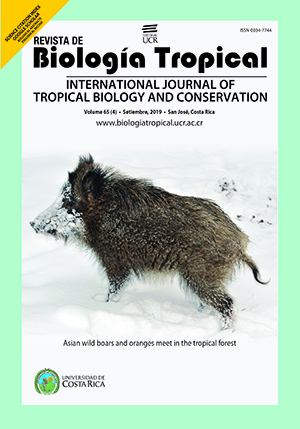Resumen
Abstract: Reunion in the overseas: introduced wild boars and cultivated orange trees interact in the Mata Atlântica (Brazil). Novel interactions are attracting a lot of interest, especially those occurring between wild animal species and agricultural crops as a consequence of human activities. Novel interactions usually concern to species that interact only because human activity but that otherwise would not even coexist. Typically novel interactions arise from biological invasions as well as from interactions between native and crop species. Less studied are novel interactions between species that originally interact in their native range but, as consequence of human activity (domestication, game introductions, etc.), are now interacting out of their original distribution under new ecological conditionsIn this article, we study the interaction between orange and wild boar, both species sharing Asian origin but being introduced in America and then subjected to new ecological conditions. Dispersers of sweet orange seeds are unknown. As wild boar consumes fruits frequently in citrus orchards, here we assessed whether i) it consumes orange seeds, ii) they are viable after passing through boar’s digestive tract and iii) orange seedlings may naturalise in the Mata Atlântica of Brazil, in a citrus farm surrounded by a large natural area called Mata da Virgínia. We used camera surveys in the orange orchards and in the jungle to identify orange fruit consumers in two periods in 2014 and 2015. The jungle was additionally surveyed looking for citrus seedlings finding more than 50 seedlings in which it was confirmed that they belong to sweet orange trees by SSR techniques. As the wild boar was identified as the main orange consumer, 19 fresh boar feces were collected and citrus seeds removed and sown to assess their viability. Citrus seeds were also planted in the jungle and their germination and seedling survival were studied. Three years after sowing, just 5% of the seedlings remained alive with an average height of less than 10 cm.
##plugins.facebook.comentarios##

Esta obra está bajo una licencia internacional Creative Commons Atribución 4.0.
Derechos de autor 2019 Josep Enric Peris Rodrigo






